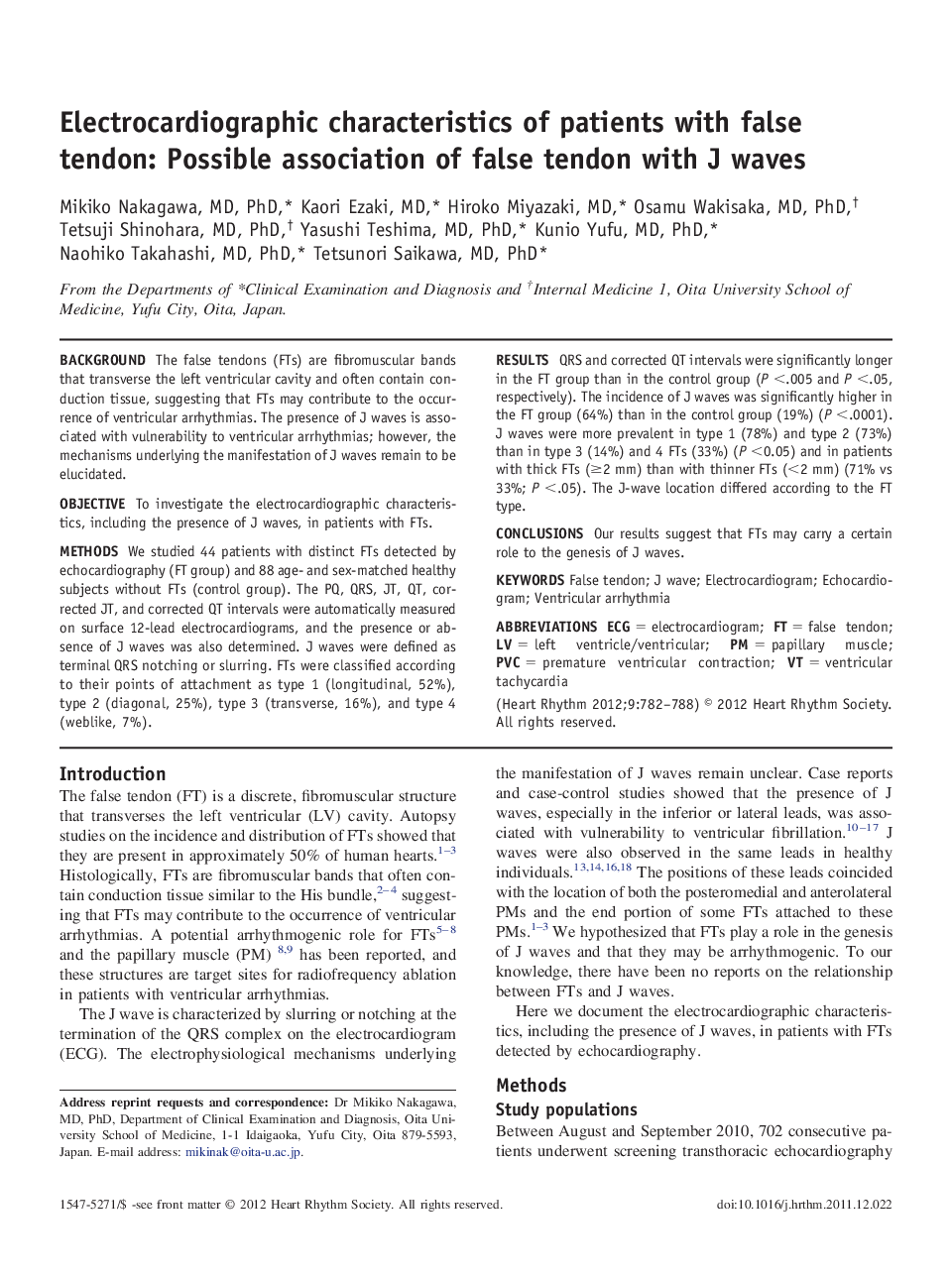| کد مقاله | کد نشریه | سال انتشار | مقاله انگلیسی | نسخه تمام متن |
|---|---|---|---|---|
| 2922456 | 1175846 | 2012 | 7 صفحه PDF | دانلود رایگان |

BackgroundThe false tendons (FTs) are fibromuscular bands that transverse the left ventricular cavity and often contain conduction tissue, suggesting that FTs may contribute to the occurrence of ventricular arrhythmias. The presence of J waves is associated with vulnerability to ventricular arrhythmias; however, the mechanisms underlying the manifestation of J waves remain to be elucidated.ObjectiveTo investigate the electrocardiographic characteristics, including the presence of J waves, in patients with FTs.MethodsWe studied 44 patients with distinct FTs detected by echocardiography (FT group) and 88 age- and sex-matched healthy subjects without FTs (control group). The PQ, QRS, JT, QT, corrected JT, and corrected QT intervals were automatically measured on surface 12-lead electrocardiograms, and the presence or absence of J waves was also determined. J waves were defined as terminal QRS notching or slurring. FTs were classified according to their points of attachment as type 1 (longitudinal, 52%), type 2 (diagonal, 25%), type 3 (transverse, 16%), and type 4 (weblike, 7%).ResultsQRS and corrected QT intervals were significantly longer in the FT group than in the control group (P <.005 and P <.05, respectively). The incidence of J waves was significantly higher in the FT group (64%) than in the control group (19%) (P <.0001). J waves were more prevalent in type 1 (78%) and type 2 (73%) than in type 3 (14%) and 4 FTs (33%) (P <0.05) and in patients with thick FTs (≥2 mm) than with thinner FTs (<2 mm) (71% vs 33%; P <.05). The J-wave location differed according to the FT type.ConclusionsOur results suggest that FTs may carry a certain role to the genesis of J waves.
Journal: Heart Rhythm - Volume 9, Issue 5, May 2012, Pages 782–788